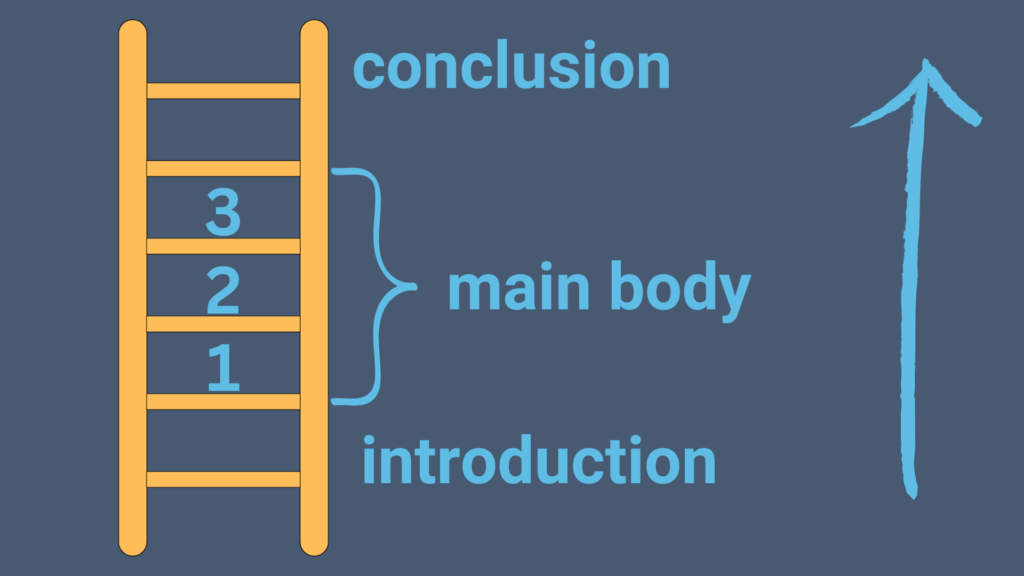In this introduction exercise, students research and consider communication, how business communication is structured and functions, and why communication succeeds or fails by addressing these questions:
1. Why are communication skills integral to management?
2. Why is effective communication important for managers?
3. Can you identify possible in-company communication flows and business communication scenarios?
4. Can you define how communication works?
5. How does business communication differ from social interaction / small talk?
6. What are possible barriers or issues in international communication?
This research can be done as a homework or self-study assignment and can also be done as small group work. Students can give their answers on Moodle or another platform and/or give a short talk on their findings.
Discuss the answers in class so that you can give any necessary input.
A further tip is to invite former students of the course to give a short talk or presentation about their experiences and insights in doing Business English.

Why
Many university students have little or no work experience or have never used English in a business environment. Even if students have work experience, there is no guarantee they have attended any communication skills training or used English at work. They have little or no understanding of what Business English is.
This exercise also addresses problems of misconception. Students who have studied English at school to a high level and/or lived or studied in a country where English is the native language may underestimate the demands and requirements of studying Business English and even make the mistake of regarding Business English as an easy option in the curriculum.

Students may listen and respond to tips from former students – their peers – more readily than from teaching staff. Arranging talks by former students is invariably a worthwhile and productive exercise.
The exercise gives an introduction into the complexity of Business English so that students can begin to understand what is required so that they can fully engage in lectures. This understanding will lead to everyone involved enjoying a more productive and rewarding course.
Guidelines on Questions
There is some overlap and sometimes no definitive black or white answers to some questions where the objective is more to prompt a lively discussion and appreciation of the issues.
1. Why are communication skills integral to management?
A company’s aim is to increase productivity and profitability. Effective communication enables a company to achieve this and is the basis of work and success. People work in companies and people need to communicate. They wish to achieve goals and achieve those goals in teams.
Good communication reflects company culture and values internally and externally.
Effective communication helps in:
– getting everyone on the same page
– clarifying (common) goals
– giving and getting feedback
– achieving customer satisfaction
– getting good negotiation outcomes
– saving time
– reducing costs
– defining tasks clearly
– completing tasks efficiently
– building relationships
– creating effective teams
– understanding all points of view
– creating good flows of information
– preventing loss of information
– identifying and solving problems
– avoiding (costly) misunderstandings
– preventing and dealing with conflict
– promoting creativity and innovation
– creating a positive working environment & preventing staff fluctuation
– maintaining a good reputation and image (having effective branding).
2. Why is effective communication important for managers?
Managers need to communicate and you can’t be a manager without the skills. Communication is the basis for establishing good working relationships and handling a global workforce.
Communication is the key to everything a manager is required to do. In their jobs, managers are engaged in giving directions & instructions, giving & receiving feedback, achieving goals in negotiations, connecting both internally and externally, coordinating, delegating, networking, showing empathy, selling themselves and their ideas, motivating, inspiring, clarifying, earning respect, expressing authority, organising, convincing, handling people at all levels of the hierarchy, putting themselves in other peoples’ shoes and representing the company. Communication is the key to adaptability, flexibility and seeing the wider picture.
The greater the responsibility the greater the damage with a lack of communication. The ability to communicate is a measurement of management success.
3. Can you identify possible in-company communication flows and business communication scenarios?
Communication moves downward in a chain from the top management levels to subordinates and upward from subordinates to the directors. Communication also moves horizontally across different functions and departments.
Scenarios include meetings, presentations, negotiations, briefings, business phone calls, report writing, correspondence, email, social media, blogs, one to one meetings, intranets, databases, video conferencing, (job) interviews, all kinds of documentation, PR and so on.

What is worth noting here is that technology changes – who uses a fax machine today? – and is changing at a rapid rate. None of us can really predict how the workplace will look and function in 30 years’ time. However, the communication scenarios themselves and the conventions do not tend to change. An online business meeting taking place today fundamentally uses the same conventions as those in an in-company meeting that took place 30 years ago.
4. Can you define how communication works?
Communication is a process and these components are often given in describing the process:
Sender (Source) – Message – Encode – Channel – Receiver – Decode – Feedback

The Sender puts together a Message and Encodes the message by choosing the words to put across the meaning. S/he selects the Channel (e.g. telephone, email) that is used to convey the message. The Receiver receives the Message from the Sender and Decodes the Message by interpreting and analysing it. Then, the Receiver responds which is giving Feedback (e.g. agreeing, disagreeing, asking for more information, asking for clarification etc.). The process is repeated in a loop.
You can also consider:
– use of techniques that can be learnt and trained (e.g. clarification, paraphrasing, active listening)
– non verbal communication and signals (e.g. mimic, gestures, dress)
– the importance of open-mindedness, tolerance, empathy and attitude
– having a common language
– context.
5. How does business communication differ from social interaction / small talk?
Business communication scenarios have structure – often with an opening, body, and close – and they have conventions. These structures and conventions have to be learnt and practised to be successful. Even a business phone call differs or should differ from a social call. Learning the conventions is thus an important element of learning Business English.
Business communication has a target or goal – a purpose – that should be achieved by the end of the communication. As a result, business communication is or should be linear moving from A to B to C to D to E.

Social conversation on the other hand tends to have little or no structure and is random in its nature. The aim, if there is one, is to maintain and build relationships. Social conversation is a part of business but its nature should be recognised as well as the appropriate time and place for its use. For example, small talk can “surround” business communication, before or after a meeting, negotiation or call.

Here are some further areas that can be discussed in answering this question:
– the topics and subjects
– the environment and context
– the need for preparation
– greater formality and perhaps seriousness (can depend on the nature of the business and the corporate culture)
– legal consequences (content can be legally binding)
– the choice of words, vocabulary and construction (i.e. encoding)
– the need for good communication skills
– the need for training
– the necessity of intercultural awareness
– time constraints
– the role of hierarchy
– the role of emotions
– the role of corporate culture
– you can’t always choose the people you do business with or work with
– attitudes
– the necessity of reading between the lines at times
– the choice of the right channel at the right time (i.e. should I pick up the phone or write an email?)
– the representation of a viewpoint that is not necessarily your own but is in the company’s interest.
6. What are possible barriers or issues in international communication?
Here are some subjects that can be discussed in answering this question:
– culture
– values
– behaviour
– different working styles (linked to corporate culture)
– language
– taboos
– non-verbal norms and standards
– time zones
– geographical distance
– history
– tastes and preferences
– religion
– sense of humour
– gender roles
– training and education (levels of knowledge and expertise)
– attitudes (e.g. towards physical disability, minority groups, money)
– levels of technology
– political systems
– prejudices and stereotypes
– perceptions and ways of decoding
– social norms and the role of socialising
– negotiating style
– legislation
– understanding of signals and symbols
– levels of formality and hierarchy
– a lack of communication skills (e.g. clarification, paraphrasing, asking questions)
– including people in the communication
– not being able to express what you really want (e.g. using English)
– the role of native speakers in using English as a global language.
